Welcome to Old School Month on Eternal Central. We’re looking at a different Old School 93-94 deck each day of the month. Today’s deck is Power Artifact Combo, utilizing the combo of Power Artifact and Basalt Monolith to generate infinite mana, in a five color combo shell. Here is my latest version.
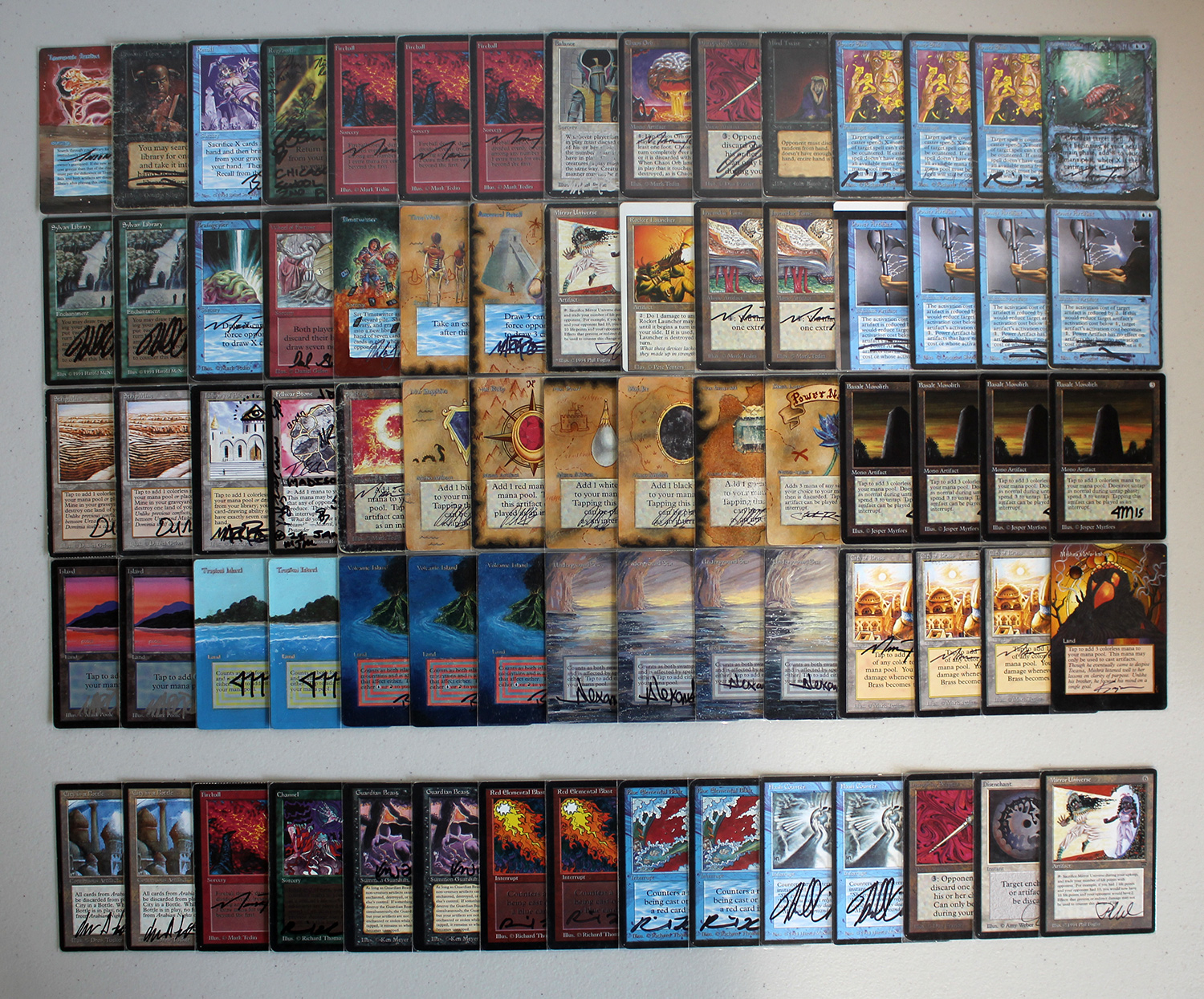
Constructing Power Artifact Combo
If you look around at other Old School resources, you’ll probably be able to find other Power Artifact Combo decks, most of which are Blue-Red, or Blue-Red-Black. This one stretches the mana a bit to include all of the most hideously broken spells in Old School, kind of like The Deck (5C Control). But instead of boring kill conditions like Mishra’s Factory, we generate infinite mana and send a Fireball to the dome of the enemy.
Creature Choices
This is essentially a creatureless deck, with the only thing we really want access to being Guardian Beast. I like to keep this in the sideboard, and then bring it in sometimes against decks that will board out all of their creature removal. This helps ensure that their removal is dead Game 1, and add a layer of protection to your combo components in Games 2 and 3.
Kill Conditions
The most synergistic kill conditions when making infinite mana are ones that can absorb all of the mana to do a large amount of damage. Fireball and Rocket Launcher are the standards in this style of deck, and Braingeyser is also a card that can be used with infinite mana to kill the opponent (by making them draw an absurdly large number of cards, in order to deck them).
Mirror Universe acts as another kill condition, and allows you to use your life as a resource, soaking up attacks, and drawing extra cards with Sylvan Library. It is rarely a dead draw, and synergizes well with the rest of the deck’s game plan.
Draw Engines
This particular version of Power Artifact Combo is five colors, in order to soak up the best cards from each color. In doing so, we get all of the broken restricted draw spells (Ancestral Recall, Time Walk, Timetwister, and Wheel of Fortune), as well as Sylvan Library. Sylvan is especially great in the first couple of turns to help you smooth your mana out, or explode with multiple threats or combo pieces in a single turn.
Blue’s old standby of Jayemdae Tome also serves this deck well. With roughly half the deck dedicated to mana production, it is usually quite easy to pay for the activation cost turn after turn. Tome can also notably be enchanted with Power Artifact to reduce its activation cost, drawing you cards cheaper every turn, and freeing up your mana to be used for other spells in the same turn. Do not be afraid to use Power Artifact on Tome or Disrupting Scepter if it will help you get ahead in the interim, before you are ready to combo off.
Book of Rass is another draw spell, which can be used to draw a ton of cards, albeit with life loss. Many Power Artifact decks use this as a way to draw a bunch of cards once they are already going off with their infinite mana combo, in order to simply find a kill condition. I prefer Sylvan Library over this, because it requires much less mana, comes down as early as Turn 1, and works great with the rest of the deck, never being a dead draw. Versions that are only Blue-Red, or Blue-Black-Red will probably end up playing one of these though.
Removal
This operates as a pretty straightforward and fast combo deck, and gives little consideration to trading one for one with many removal spells. Balance is the best removal card in the game, and we’ll gladly play that, as a card we can draw naturally or tutor for when it would devastate the opponent (or get us back in a game where we’re behind).
Old School MVP Chaos Orb is also present as a colorless way to deal with any nagging permanent or threat.
Disenchant is one of the few spot removal spells that trade 1-for-1 that I’m willing to entertain in this deck. I like 1-2 copies in the 75, as it’s just a great card to deal with problematic permanents that will allow the opponent to keep up with your card draw, or prevent you from killing them (like Circle of Protection: Red).
The Abyss is an asymmetric bomb that can be used to wipe out the unsuspecting hordes of the enemy, and should be considered in your main deck or sideboard, especially.
Constructing a Mana Base
Depending on the color configuration you choose for your Power Artifact Combo deck, you will have access to plenty of dual lands, basic lands, and City of Brass to tie it all together.
I like 1-2 Strip Mines in here exclusively as an answer to Library of Alexandria. If you are playing draw-go against a control player, trying to build a hand up with multiple threats or disruption, you cannot afford to have them freely operate a Library, pushing you further behind the eight ball.
Mishra’s Workshop is a powerful colorless mana source that can expedite mana production of your combo cards, and I like having access to at least one copy in the deck. You never really want to draw more than one of this card though, as it can’t be used for any activation cost, but merely to cast expensive artifacts.
This deck wants access to tons of mana, so all of the SoLoMoxen are present, along with a full set of Basalt Monoliths. It is important to remember that you can untap Basalt Monolith at any time at instant speed, provided you have three mana, so do not leave this untapped on the opponent’s end step if you can afford to untap it. This will allow you to power out threats faster on your turn, and have access to more mana for a large Power Sink on your opponent’s turn, to tap them out, and allow you to go off on your next turn.
Designing the Sideboard
This is a deck where you never want to over-sideboard, because all of the cards in your main deck are great, and many rely on each other. You can often trim a mana source or combo component or two, but beware of making wholesale changes to the main deck, unless you have a well thought-out reason for doing so.
With this line of thinking, most of the sideboard cards are one-ofs, or two-ofs, to address a variety of hate cards you’re likely to see.
Flash Counter is very useful for dealing with not only opposing countermagic, but also instant speed removal spells like Disenchant and Shatter.
Red Elemental Blast a very efficient way to win counterwars and deal with Energy Flux, while Blue Elemental Blast can help knock off annoying permanents like Blood Moon.
A fourth copy of Fireball as well as Channel can be found in this sideboard, which can be used as an alternative combo kill (if you think the Power Artifact angle will be hated out by excess artifact removal), or as an accelerated way to race aggressive decks that lack countermagic.
City in a Bottle does run afoul of your own City of Brasses, but it sometimes worth doing so when City in a Bottle will be a gamebreaker against opposing Arabian aggro strategies.
The rest of your sideboard can be filled out with opposing counter-tactics to handle whatever you think the opponent will do, or to give you a more transformational angle of attack after sideboarding.
Playing Power Artifact Combo
The general theme of this deck is to assemble the combination of Power Artifact and Basalt Monolith, which will enable you to generate infinite mana, at instant speed, by tapping Basalt Monolith to add 3 mana to your pool, and then untapping it for less (by virtue of being enchanted with Power Artifact), and then tapping and untapping it ad nauseam. You then use this mana to kill the opponent with a Fireball, Braingeyser, or Rocket Launcher. Of note, Rocket Launcher essentially has summoning sickness, because of the actual text of the card, so you must sequence your plays accordingly.
Everything else in the deck basically draws cards, or counters the opponent’s attempt to disrupt you or kill you. It plays like a straightforward combo deck, with slight flexibility in the ability to grind out advantage with things like Disrupting Scepter and Jayemdae Tome (both of which can be enchanted with Power Artifact to make their activation costs cheaper).
Ten Opening Hands with Power Artifact Combo
Here are ten randomly drawn opening hands with the deck (in order, and not manipulated in any way), and a few brief words with how I might look to play said opening hands.
Opening Hand 1

With on-color mana, acceleration, and business, this is a nice hand. Depending on what the first couple of draw steps deliver, we will either be casting Time Walk to see another card and further develop our resources, or hopefully dropping some kind of reusable artifact.
Opening Hand 2

This hand can play a first turn Timetwister, or hold up Power Sink. I’d probably hold up Power Sink, and then cast it on whatever the opponent does (including a Mox) in order to tap them out, and then untap and cast Jayemdae Tome, and then on the following turn use the Timetwister. While the first turn Timetwister is enticing, this makes better use of your resources, and probably gives you the best opportunity to win post-Twister.
Opening Hand 3
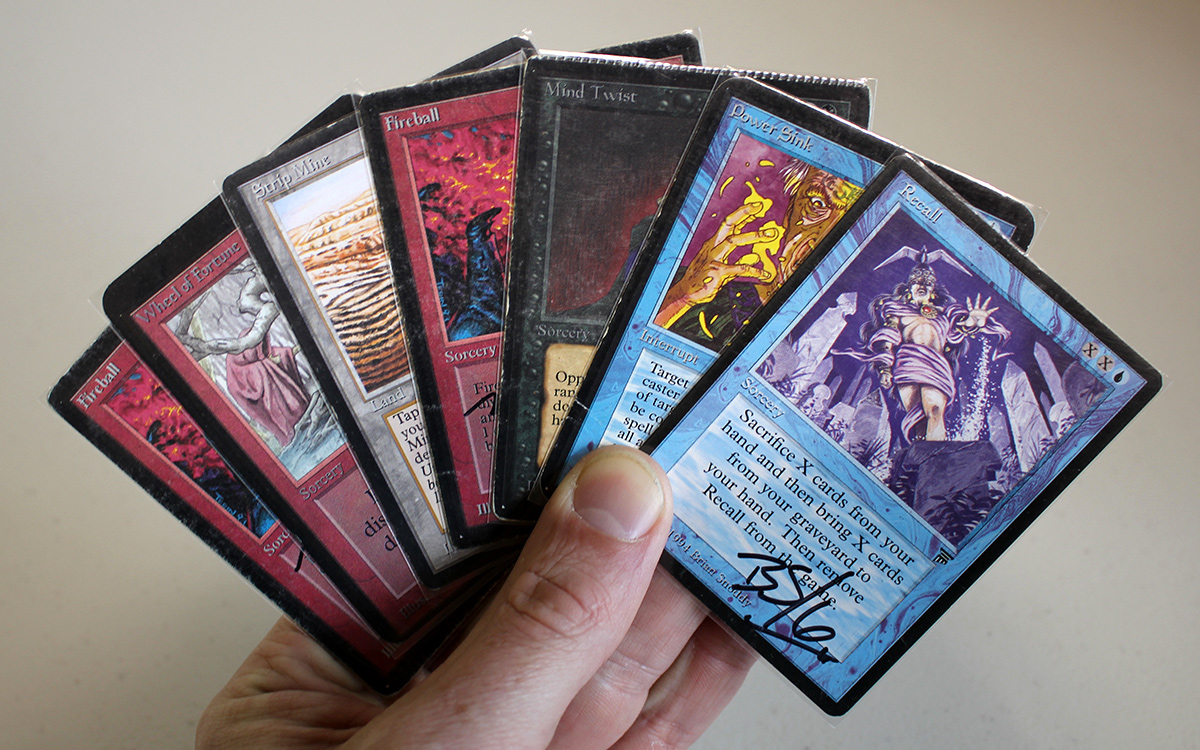
A hand full of X-spells and no mana to cast them requires an immediate mulligan.

Another hand full of business, with no mana to fuel it. Let’s hope for a Draw 7 or something in our next five, to make up for this card disadvantage.
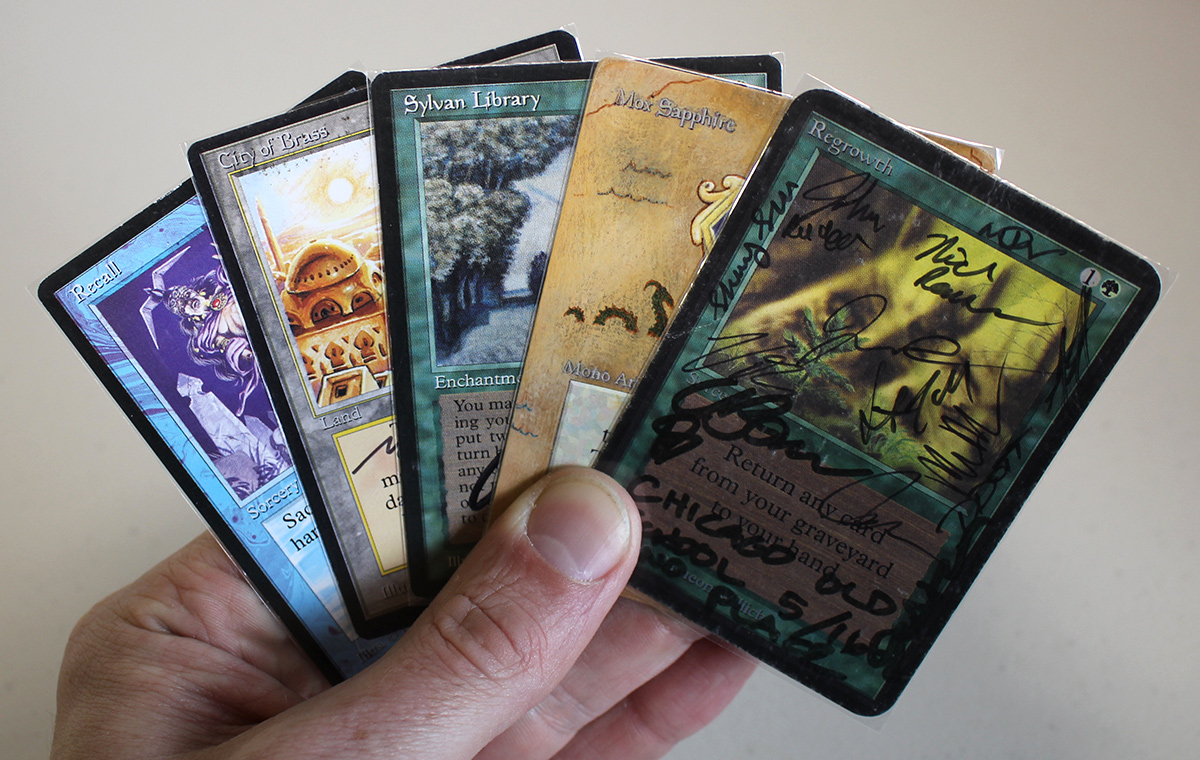
Well, a first turn Sylvan Library is good enough. The Recall is pretty dead here until the mid-game when we’ve got more cards, but the Regrowth can at least help buy back Sylvan, should it get countered or removed. With our pre-game scry we’ll be seeking more mana or draw spells, and bottoming probably anything else (other than maybe Balance).
Opening Hand 4

This hand has plenty of acceleration, disruption, and a draw spell. Although it only contains one land, it’s a keeper. I’d lead off with mana and Disrupting Scepter on the first turn, and activate it every turn I can until the opponent deals with it. If they do, you have Sylvan Library to replenish your resources, and Chaos Orb to protect against anything threatening on the battlefield.
Opening Hand 5
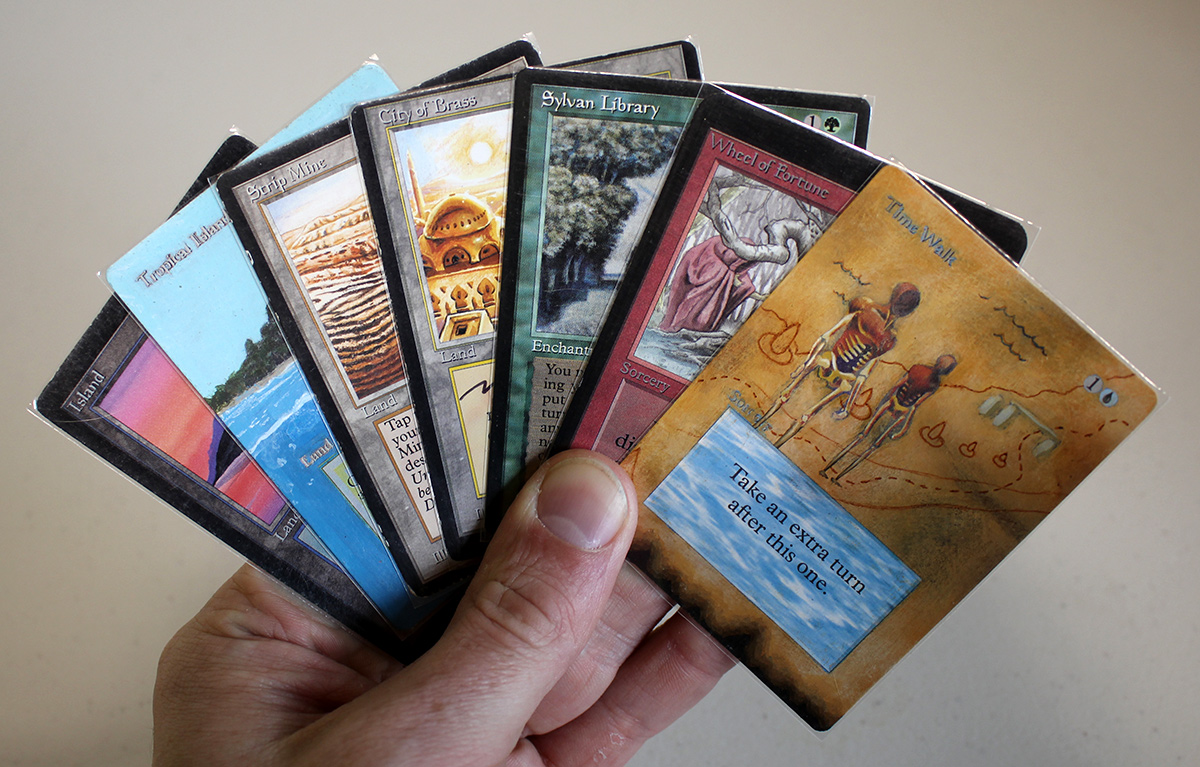
This is an interesting hand that contains mana and plenty of action, and sequencing it will depend not only on what your opponent does, but whether you’re on the play or the draw. On the play you can cast Sylvan Library on your second turn, followed by Time Walk and Strip Mine, or if you find fast mana something like Time Walk + Wheel of Fortune on the same turn. This is a great hand that will adapt as the first couple of turns unfold.
Opening Hand 6
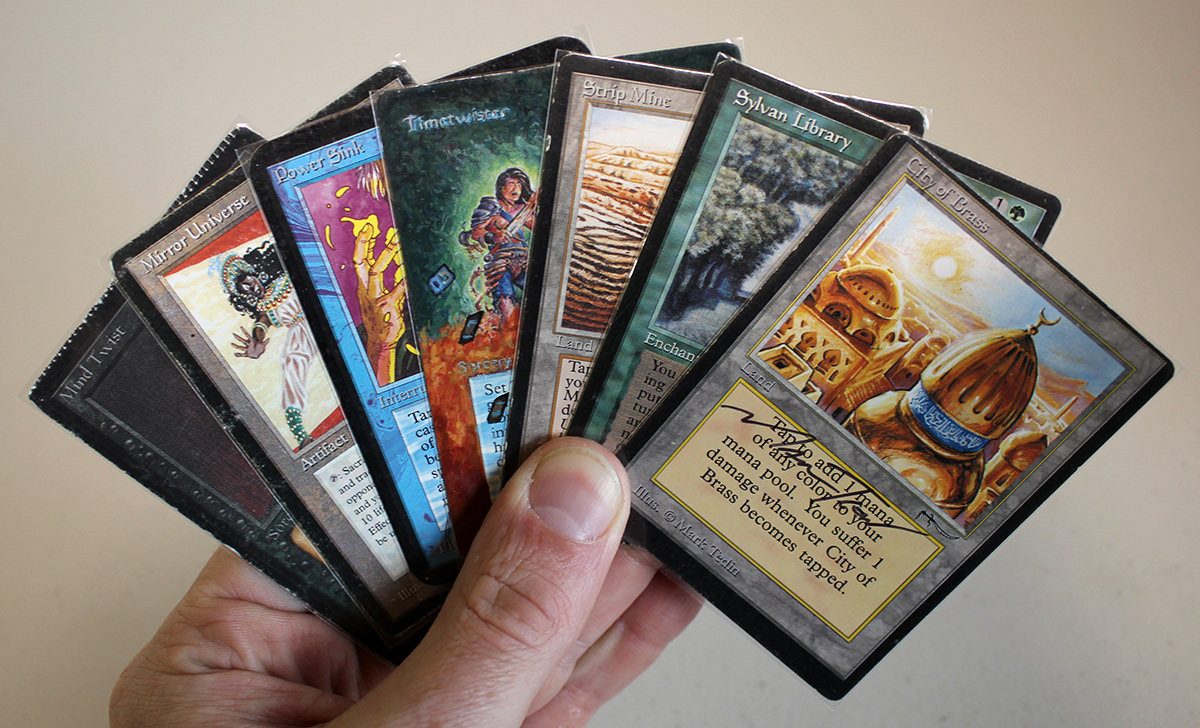
With limited mana, but very high upside with the spells present, this is a tough hand to evaluate. It can easily be disrupted with Strip Mine, but the payoff is so high that I’m going to keep it. Roughly half of this deck produces mana, so I think my odds of being shut down from casting the rest of the hand is unlikely as the first few turns develop. I’d lead off with Strip Mine to shield the City of Brass, and then hopefully cast Sylvan Library on the second turn, and see where we can go from there.
Opening Hand 7

This is another hand that can cast a first turn Timetwister. If you are on the draw, it can also play land + Lotus + Basalt Monolith + Fellwar Stone in to Timetwister. This is a keeper, and depending on what you think the opponent will do, or what they are playing, should inform your line of play here with how aggressive you want to be.
Opening Hand 8
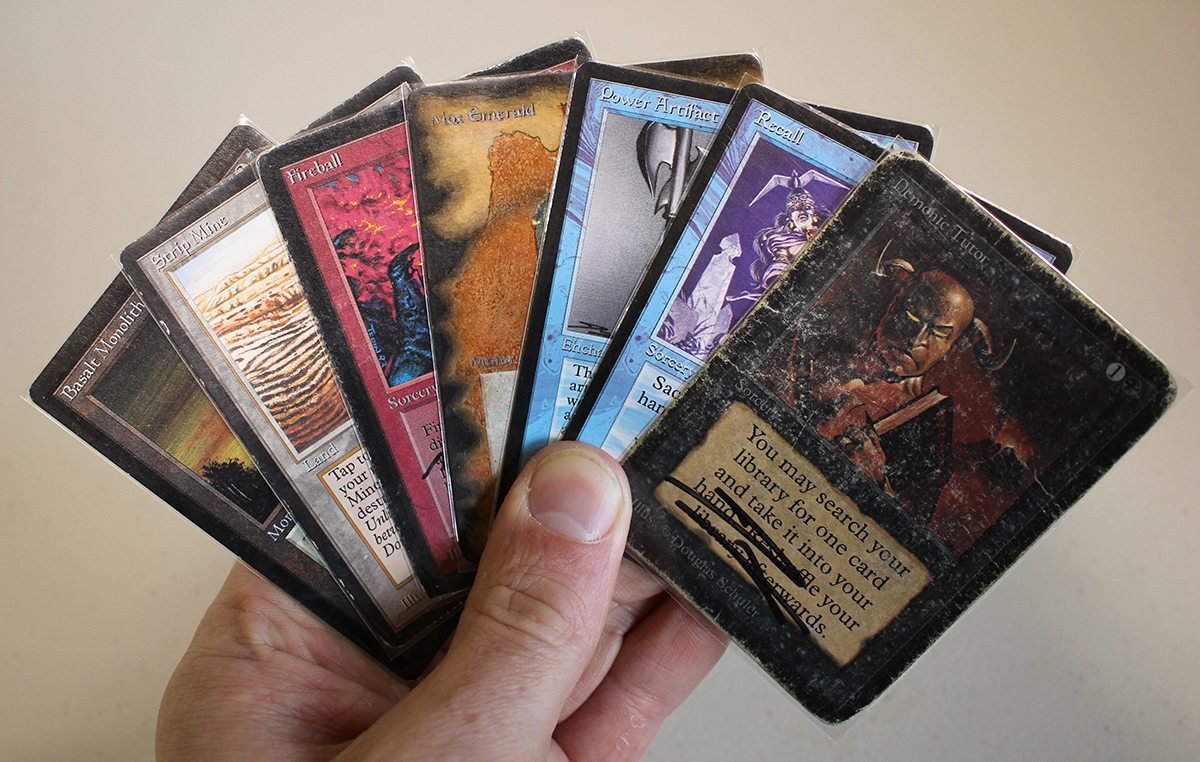
Without the requisite colored mana to cast anything, this is a mulligan. Hands like this are certainly an indictment of Strip Mine in this deck, but having the ability to be able to answer Library against the blue decks is often the difference between winning and losing.
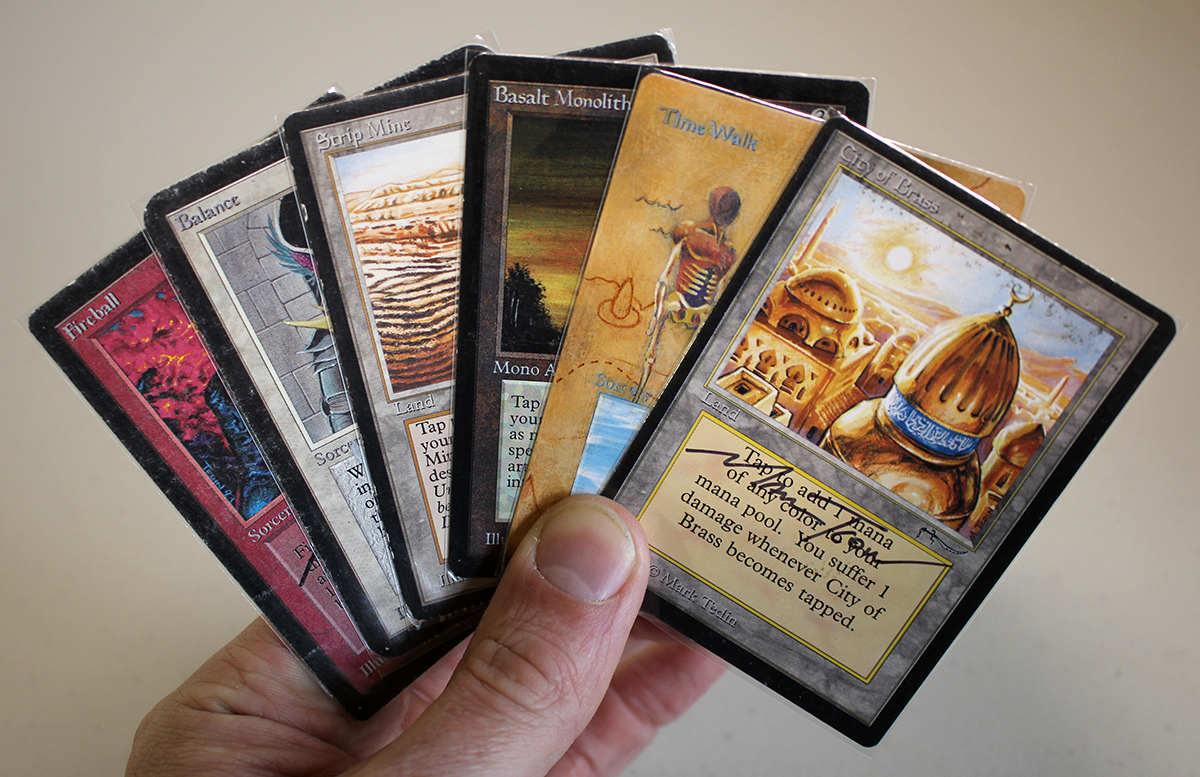
Not a great mulligan to six, but worth keeping. We can lead with Strip Mine to shield our colored mana, and then cast either Time Walk, or Balance (should we need it against an aggro deck).
Opening Hand 9
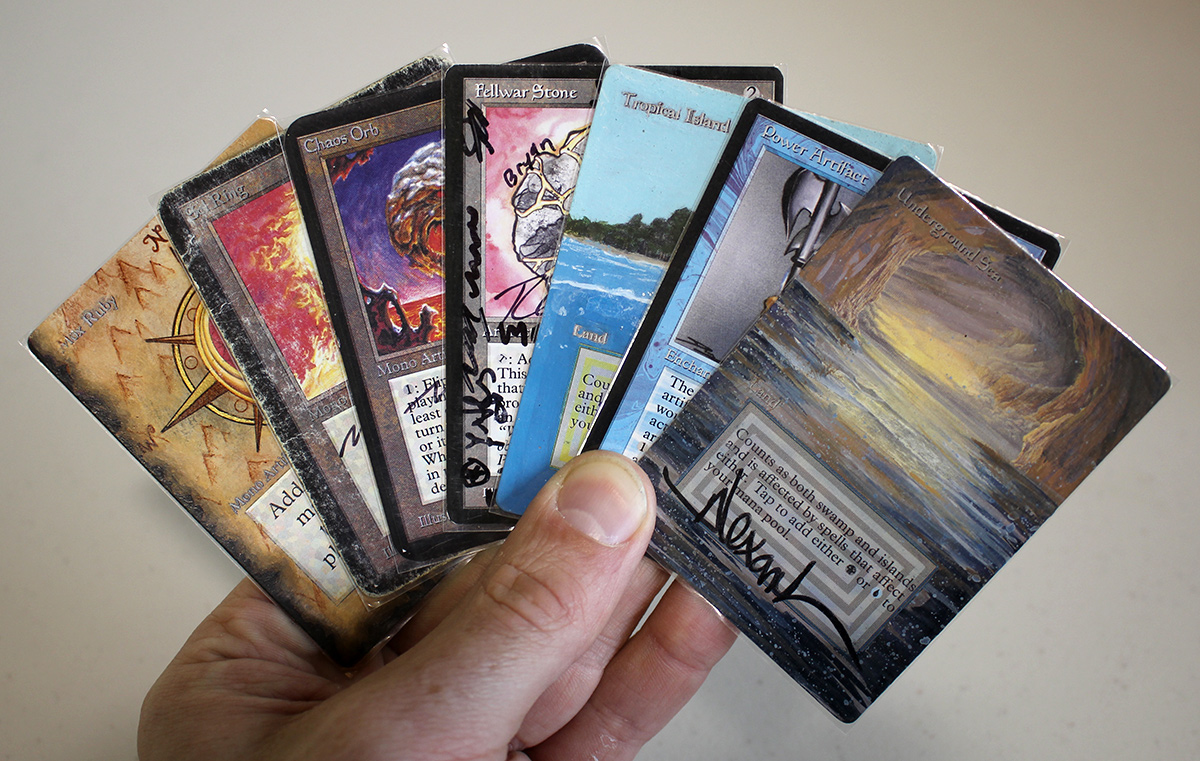
This hand features plenty of fast mana, Chaos Orb, and half of our combo. It’s a keeper, and we’re looking for basically any draw spell from here on out.
Opening Hand 10

The mana in this hand is dicey, but Mox Sapphire plus Ancestral Recall (and a fallback Timetwister) is more than enough to keep this one.
Concluding Thoughts
You can strip away colors and bombs in a Power Artifact deck to make it more counter and removal-heavy, or you can be more forward-leaning and include more and more combo parts. I prefer the latter, as it just gives the opponent fewer turns to set up, and to combat what we’re trying to do. Experiment and see what feels right to you.
Stay tuned to Eternal Central for more sick 93-94 brews all month long. Thanks for reading.

